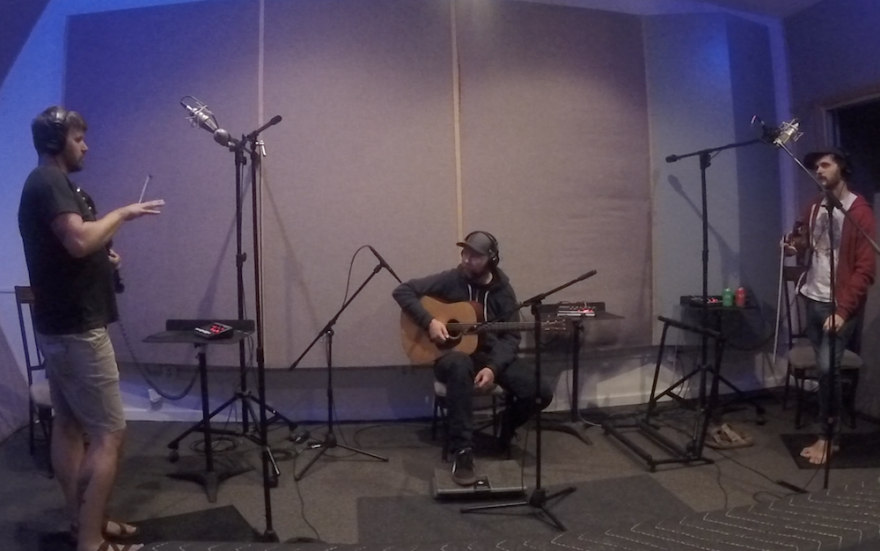The Volcanic Listening Project features a group of scientists and artists who transform volcanic data into music. It works through a process called sonification, where mathematical algorithms turn plots on a graph into sound.
KLCC’s Melorie Begay caught up with a violin playing volcanologist in Eugene who’s highlighting Mount K?lauea in this audio postcard.
FULL AUDIO TRANSCRIPTION:
"My name is Leif Karlstrom I’m an assistant professor at the University of Oregon in the Department of Earth Sciences. I grew up in New Mexico, but now live in Eugene. At the University of Oregon. I study volcanology broadly speaking. Making predictions about how volcanos work.”
My family is musical my mother plays violin in an Orchestra and teaches children. My sister plays violin. I play violin. I started when I was five. “

For most of my professional life, I’ve tried to keep the science and music sides quite separate. There’s no real need for overlap and in fact the communities that do music and science professionally, there’s not a whole lot of overlap in how they think and the thing that they think are important. So, I felt no need to join those interests, but found a way to do so recently through thinking about volcanic data as sound.
Normally scientists and the public at large interact with data visually. You make plots of a given observation and then interpret those plots you graphs, you look at movies these types of things. But of course that’s only one of our senses. And our brains are sort of evolutionarily hardwired to interpret sounds. We’re really good at picking out patterns in noisy data
What I started doing and this is with a collaborator at Columbia University named Ben Holtzman, who’s been doing this well over a decade now, is developing algorithms to turn volcanic data, a whole variety of different types of data into sound. We call that process sonification.
First we acquire the data and in case we’re using data collected by the Hawaiian volcano observatory directly, and so that’s already there for us we can download it off the internet. In fact, anyone can download this data off the internet.
So you can hear the computer noises that we’ve used. The sonified data. The ground deformation is a very low hum. We’ve mapped the defamation of the ground directly to pitch and so it’s this low frequency continuous sound. The deflation, inflation events are these sort of discrete beeps, where the pitch and the loudness of the sound scales with the magnitude of the event.
But what we’re listening to is both the computer generated sounds and our musical interpretation. We had an upright bass player, we had myself playing violin, we had another violin player, and we had a guitar player. And so the result is something that I think- I’ve been told it sort of sounds like a horror movie soundtrack.

I think most volcanologists would say that each volcano has its own personality and that’s sort of what makes them interesting to study. We can look at one and try to understand its tempo. The things that make it tick and they might be quite different from another. That being said, there are these overarching themes that are common to all volcanos. That’s sort of what makes the science interesting that on the one had you have these common processes that we’re trying to understand that sort of make all volcanos tick, and on the other hand they all behave a little bit differently.
I hope that what this does is provide people with a new way of engaging with scientific data both from an artistic side and from a scientific side. There’s, you know, there’s an enormous gap in our culture right now between those who are involved in the creation of science and the public at large. There’s a lot of skepticism about science in general. And so, this is in some ways we could think of it as maybe a subversive way to get people involved in science. We’re not trying to beat people over the head with “this is what’s happening in the world” but more like hey listen to this it’s very cool. And hopefully that draws people in."
Click the link to learn more about the Volcanic Listening Project.
Music featured in this audio postcard was provided courtesy of Leif Karlstrom and appears on Dreams and Circumstances by Small Town Therapy on Organic Records, copyright 2019.



